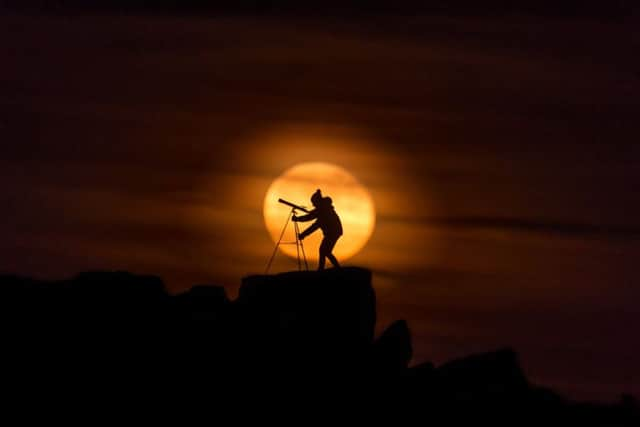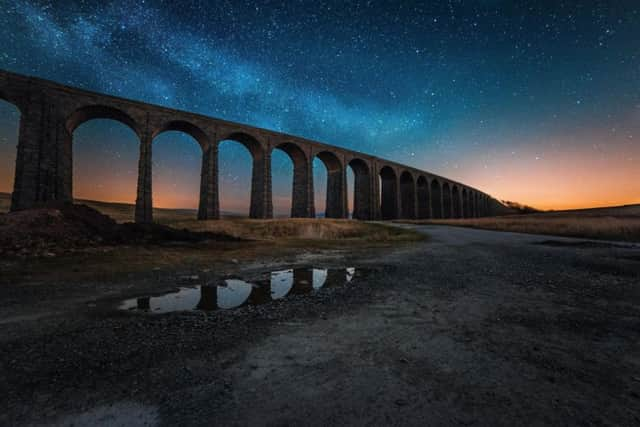Why light pollution is leaving stargazers in the dark
For Bob Mizon it began with a library book. More specifically it was the Larousse Encyclopaedia of Astronomy which first sparked an interest in the night sky. While still in short trousers when he first looked through a telescope, Bob grew up to be the head of the British Astronomical Association’s Commission for Dark Skies and it’s why when everyone else is sleeping he can often be found driving around the countryside armed with a little gadget which measures light pollution. “Why do we need to protect our dark skies? The simple answer is that they are beautiful,” says Bob, who learn to identify the constellations before the could tie his own shoe laces. “But even if you don’t give a hang about astronomy, light pollution is not just a waste of energy, it’s also a costly one.”
It’s a persuasive argument, but one which so far has fallen on deaf ears. While there are pages of laws governing everything from noisy neighbours to fly tipping, when it comes to light pollution the statute book is conspicuously bare.
Advertisement
Hide AdAdvertisement
Hide Ad“We have been having the same argument for 30 years,” says Bob. “If you want to install your own cooker, you can’t, it has to be done by a qualified professional. However, if you want to put up an outside light which shines directly into your next door neighbour’s window you can go right ahead because the regulations that do exist are pretty toothless.”


Light pollution takes various forms, from the skyglow which surrounds towns and cities to what’s known as light intrusion where light spills beyond the boundary of one property and through the windows of another.
In 2016 the CPRE used satellite images to produce the first ever night blight maps which showed that just 22 per cent of the country has pristine dark skies and successive studies have highlighted the dangers of light pollution. Some have suggested exposure to light at night can disrupt the body’s production of melatonin, a hormone known for resetting the body’s biological clock. Others have claimed that by upsetting wildlife’s natural rhythms it can impact on migration, reproduction and feeding patterns.
“Nature needs the night. Sixty percent of the world’s invertebrates and 30 percent of vertebrates are nocturnal and if they are deprived of darkness, particular in urban areas,” says Bob, who points to the decline in sparrows in many towns and cities. “If there is no night then various species just can’t survive and if you impact one link in the food chain, you impact the entire thing.”
Advertisement
Hide AdAdvertisement
Hide AdNext month will see the start of the annual Dark Skies Festival. With events held across both the North York Moors and the Dales since launching two years ago it has become a showcase for Yorkshire’s astronomical hotspots, but drive a few miles south and it’s a very different story.


According to night blight maps, which were published by the CPRE using satellite imagery in 2016, while the Yorkshire Dales has been ranked as the third darkest National Park in England where 79 percent of night skies falling in the darkest categories, West and South Yorkshire are amongst the worst offenders when it comes to light pollution - the brightest spot of anywhere in the country was found to be the Tata Steel plant at Rotherham.
“I grew up in London, but we used to go youth hostelling in the Dales and I remember the first time we went waking up and thinking I had lost my sight it was so dark,” says Emma, senior rural policy campaigner at the CPRE. “What our maps have done I hope is give us a based line by which we can measure levels of light pollution. It is a problem, but it is one which can be solved.”
One saviour of the night sky was thought to be the arrival LED lights, which are increasingly used by councils and large business as cheaper and supposedly more environmentally friendly alternative to traditional light sources. North Yorkshire, Calderdale, Doncaster, Sheffield, Barnsley and Rotherham councils have all switched to LED street lighting, but the higher temperature blue rich lighting it emits which has unknown impacts on human health and ecology.
Advertisement
Hide AdAdvertisement
Hide Ad“LED lighting ticks a lot of boxes,” says Bob. “It is energy efficient. It is cheap and it can be switched on and off when you want to. But it’s not that simple. Much of this lighting is made in the Far East and you can’t direct it properly so what you end up with is incredible glare. If water main bursts someone fixes it, light pollution is allowed to continue unabated.


“When you mention street lighting, the common response is, ‘well it reduces crime’, but actually there is no good scientific evidence to back that up. In fact the number of crimes per person committed is very strongly associated with more light polluted areas as it helps criminals assess potential targets.”
From a light polluted town or city it’s possible to see perhaps 200 stars. From a dark sky site it’s possible to see as many as 3,000 stars without any visual aid on a moonless night. However, those campaigning for better protection suspect the reason why their calls have so far been met with indifference is because having grown up surrounded by light pollution we all now accept it as the norm.
“It’s not just us, apart from a few exceptions like Slovenia and some parts of Italy, everywhere is the same,” says Bob. “After Hurricane Sandy hit New York there was a massive power shortage which cut out the lights over Manhattan. People wondered what the strange, dusty looking cloud in the sky was. It turned out it was the Milky Way.”
Advertisement
Hide AdAdvertisement
Hide AdThe North York Moors and the Dales are now classed as Dark Sky Discovery Zones. It’s a level below the official Dark Skies Park status, which has been awarded to areas like Kielder Forest in Northumberland and Snowdonia National Park.


“With areas as large as the National Parks in Yorkshire it’s not an easy thing to achieve as you have to carry out an audit, measuring and recording every single light source,” says Bob. “However, if you can achieve it the rewards are potentially huge.”
Galloway Forest became Europe’s first Dark Skies Park in 2009 Around £21,000 had been spent on achieving the status, but with the stargazing season running from October to March it now attracts visitors during the normally quiet winter season and early figures showed for every £1 spent on transforming the area, there had been a return on investment of £1.93.
“The Milky Way is nature’s greatest show,” says Bob, who adds Bob, who is also author of Finding a Million-Star Hotel: An Astro-Tourist’s Guide to Dark Sky Places. “It is a site of special scientific interest and an area of outstanding natural beauty, yet we are in danger of allowing it to be stolen from us.
Advertisement
Hide AdAdvertisement
Hide Ad“The light from distant shores takes hundreds, thousands, even millions of years to reach us, but what a tragedy to lose it in the last millisecond of its journey.”
The Darks Skies Festival runs from February 9 to 25. darkskiesnationalparks.org.uk